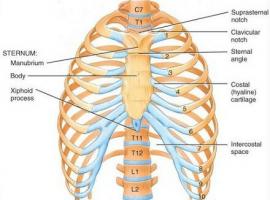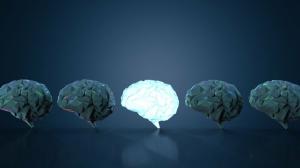Urgency of the bladder: what is this symptom and what diseases is it associated with?
The production of urine is essential for the survival of humans. With a daily intake of two liters of water, it is estimated that the average person excretes 0.8 to two liters of urine every 24 hours.
This fluid contains toxic substances produced during cell metabolism (urea), allows the elimination of elements ingested harmful substances (alcohol and drugs) and maintains the electrolyte and homeostatic balance between the blood, tissues and body. around.
On the other hand, it should be noted that the fact of urinating in specific spaces is a human social construct, but also a behavioral adaptation. Many animals create latrines in the natural environment and, with them, centralize the sources of diseases and keep them away offspring, define their territory unequivocally and send chemical messages to other populations and/or species. For all these reasons, although it is sometimes difficult for us, it is necessary to hold the urine and wait for an appropriate social (and biological) moment.
Unfortunately, there are people who have problems retaining urine or perceiving the real state of your bladder, which greatly hinders the urination process and decreases to a greater or lesser degree the quality of life. Today we tell you all about urgency.
- Related article: "Excretory system: characteristics, parts and operation"
What is urgency?
The word tenesmus, according to the medical dictionary of the Clínica Universidad Navarra (CUN) refers to a sensation of continuous desire, generally unproductive, to urinate or defecate. In the case of rectal tenesmus, the sensation may be accompanied by pain, cramping, and straining to defecate. On the other hand, bladder urgency is not usually accompanied by more pain in the analyzed area.
For its part, urgency can be defined as the feeling or complaint on the part of the patient indicating incomplete emptying of the bladder after urination has occurred, despite the fact that there is no more urine to be excreted. In English, this term is generally known as feeling of incomplete bladder emptying.
At this point, it is essential to differentiate between sensation and reality. Urgency is a subjective picture (symptom), while the presence of residual urine in the bladder, visualized by an ultrasound, is an objective fact that is not based only on the perception of the patient (sign clinical). Urgency and failure to void are correlated in some cases, but a person can be urgency and have a completely empty bladder.
Although urgency may not have a specific physiological meaning, it is caused by an anatomical mechanism. In this case, the sensation of "lack of emptying" is caused by muscle spasms of the urogenital diaphragm. The area where the contractions and spasms that lead to tenesmus occur is defined as a part essential part of the birth canal, formed by the deep transverse muscle of the perineum, as well as the urethra and its sphincter.
tenesmus sometimes associated with a real problem in ejecting all the urine (PVR. post void residual), but on other occasions establishing this correlation is impossible. The etiology of cases of urgency with a PVR value of 0 or close to 0 is still being studied.
Urgency in the clinic
Despite the fact that we are dealing with a subjective event, it is necessary for the doctors of the world to be able to quantify it in a certain way and standardize the severity of the underlying disease based on it. For this reason, in 1992, the World Health Organization (WHO) approved the International Prostate Symptom Index (IPSS), with the in order to be able to clearly and concisely assess the genitourinary symptoms of patients with problems in this environment physiological.
The approach of this system is very simple; 8 questions that refer to the sensations and signs of the patient in the last 30 days, which can be categorized into 5 levels of intensity: 1 (none), 2 (less than once in five), 3 (less than half the time), 4 (more than half the time), 5 (almost always). These are the questions posed by the IPSS in each case:
- During the last 30 days, how many times have you had the feeling that you did not completely empty your bladder when you finished urinating?
- During the past 30 days, how many times have you had to urinate again within two hours of urinating?
- How many times have you noticed, when urinating, that the flow stopped and continued intermittently?
- How many times have you had difficulty holding urine?
- How many times have you observed during urination that the stream of urine is not strong?
- How many times have you had to squeeze or strain to urinate?
- How many times do you usually get up from when you go to bed until you wake up to urinate?
- How would you feel if you had to spend the rest of your life with prostate symptoms the way you feel them now?
All these questions are focused on the last 30 days before the consultation and can be rated from 1 to 5. As you can see, bladder urgency is represented in the first of these questions, since this refers directly to the feeling of lack of bladder emptying.
Lastly, it should be noted that the final question somewhat changes the focus of the process, since it makes reference to the impact of quality of life related to urgency and other symptoms of the system urogenital. This last question can be scored from 1 to 6, from enchanted (1) to fatal (6). Although it may seem anecdotal and rudimentary, this type of standardized questionnaire is very helpful in clinical practice.

- You may be interested in: "The 4 most important parts of the kidney, and their functions"
Urgency and LUTS
Urgency is part of the lower urinary tract symptoms or LUTS, for its English translation Lower Urinary Tract Symptoms. These are not clinical entities or diseases per se, but rather represent signs or symptoms. of other pathologies, such as prostatitis, bladder cancer, diabetes, kidney stones and many others further.
Urgency is not alone in this category, since there are many more signs that can show the aforementioned diseases. Among them, the increased micturition frequency during the day, a weaker micturition stream than normal, difficulty starting to excrete urine and many others stand out.
Lower urinary tract symptoms fall into 3 categories. These are the following:
- Filling symptoms: increased frequency of urination, incontinence, urgency, etc. They are perceived by patients as the most annoying.
- Voiding symptoms: refer to the type of urine stream and the effort the patient must make to empty the bladder.
- Post-micturition symptoms: urgency or post-urinary dripping.
Therefore, at a clinical level, urinary urgency is a postvoid symptom included within the Lower Tract Urinary Symptoms. In addition, it should be noted that this symptom is completely related to the rest of those described: if urgency occurs, it is very likely that other LUTS are present. The more severe the rest of the LUTS, the worse the urgency will be perceived by the patient.
Summary
Unfortunately, urgency and other LUTS are fairly common symptoms in the general population. Currently, it is estimated that urinary incontinence affects 200 million people, of which 50 million are located in high-income western regions. In Spain, this lower urinary tract symptom affects 20 to 45% of women over 20 years of age.
On the other hand, all unified LUTS have a prevalence of 40% of elderly men, since these are the most affected by genitourinary symptoms during old age. With all this data, it is clear to us that problems in the excretory system are extremely common, especially associated with age.
Therefore, if you feel bladder urgency or any of the previously described signs, it is best that you see a doctor promptly. Various online portals will be able to quantify your discomfort with the International Prostate Symptom Index (IPSS), but only a medical professional will be able to determine the cause of your discomfort. Don't let time pass.


